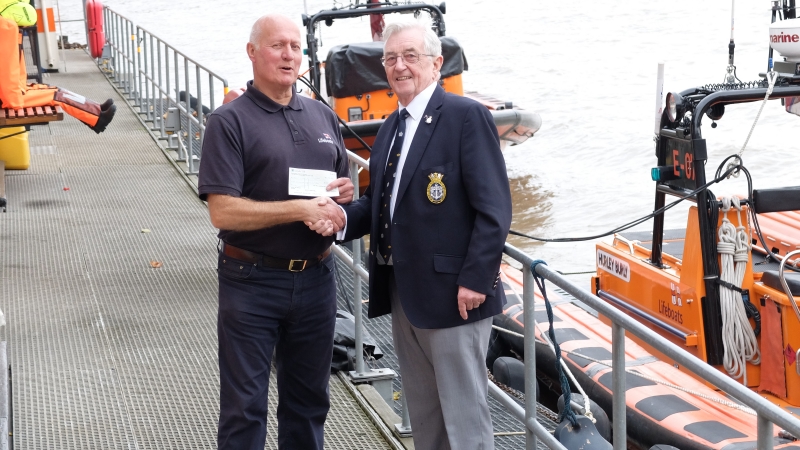The RFAA are proud to support the London Sea Cadets and the London RNLI. We donated £125 each to the London Sea Cadets and £125 to the London RNLI.
RNLI Tower
A few minutes walk from the Houses of Parliament and within the shadow of the imposing concrete of Waterloo Bridge there floats an extraordinary success story – RNLI Tower. We are pleased to say that the London and Home Counties RFAA Branch made a donation to the station and spent some time with their duty boat crew and volunteer Martin Stewart. Martin is involved in RNLI education and the station’s Assistant Lifeboat Visiting Officer.
RNLI Tower is one of four lifeboat stations on the dangerous tidal waters of the River Thames. In addition to having a seven foot tidal fall, what makes TOWER unique is that like your local ambulance and fire stations it is permanently staffed. TOWER’s 24×7 duty crew comes from a pool of 10 permanent lifeboat staff and over 50 trained volunteers; all of who are trained to minimum Ambulance Technician standards. These volunteers actually undertake a minimum of two 12 hours shifts per month.
TOWER is actually the busiest lifeboat station in the British Isles and her crew are committed to launch within 90 seconds. A glance at their statistics for last year records 512 launches. These covered a range of causes including capsized rowers, sinking yachts, people ill or injured on board vessels, boat fires and people who have jumped into the river to those stranded by a rising tide –19 lives saved and 72 people rescued.
So how do they this? RNLI Tower operates two impressive E-class lifeboats – these 10.5m boats are fitted with two 435hp Volvo D6 diesels driving two waterjets. Highly manoeuvrable boats were designed for the Thames with its powerful currents, heavy traffic, submerged debris and shallow waters. With a crew of four they can run at up to 40 knots and have a capacity for up 20 survivors.
They are fitted with modern technology – radar, GPS, e-charts, radio (for police and helicopter) and AIS. There is no wheelhouse so the crew is exposed to the elements and the RNLI maintain another ancient tradition, that of colour coding oars, with the starboard boathook painted Blue and the port hook White.
